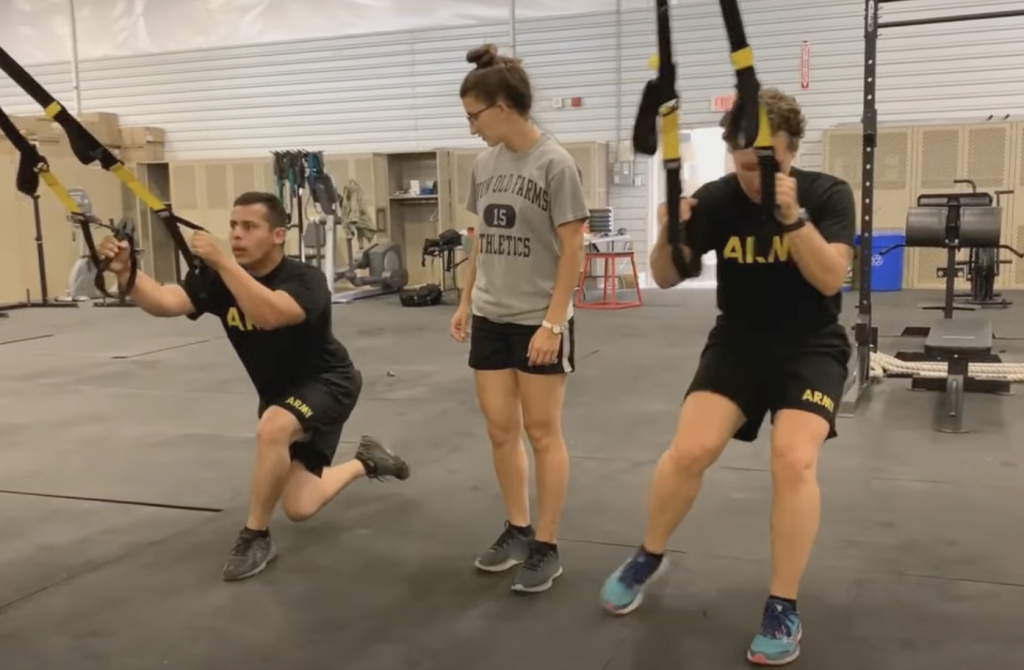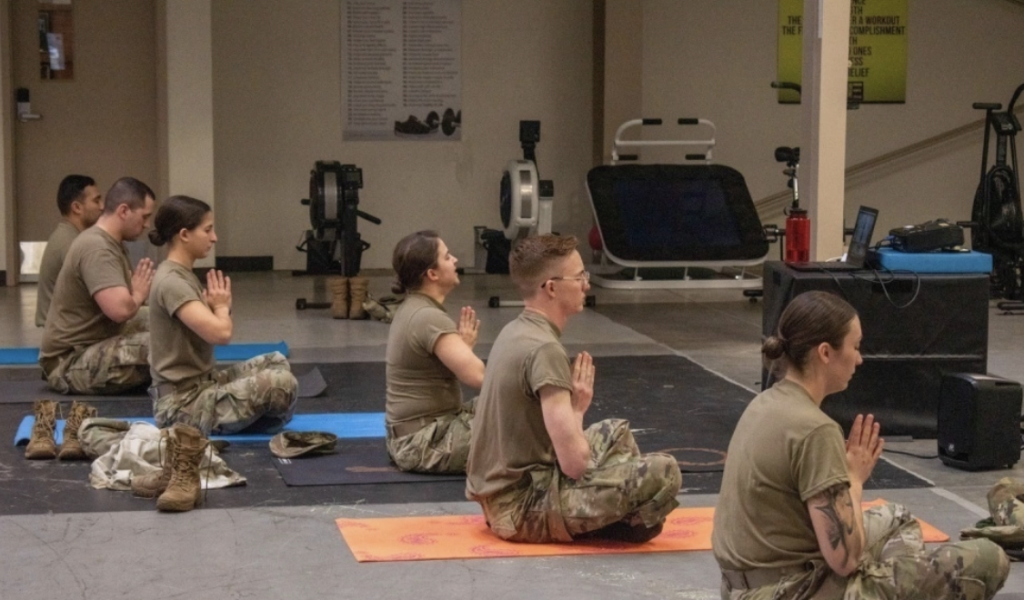
By Matt Lensing, MTI Contributor
In 2020 the U.S. Army unveiled its updated fitness manual FM 7-22 titled Holistic Health and Fitness (H2F) replacing the old Physical Readiness Training (PRT) program. The Army’s new approach to fitness aims to look at the “whole Soldier,” which includes both physical and non-physical related components of readiness: sleep, nutrition, mental, and spiritual. Strength and conditioning coaches, athletic trainers, occupational therapists, registered dietitians, and cognitive performance experts are now embedded at brigade and battalion levels to work directly with leadership and individuals to improve readiness. Unfortunately with many years until the program is fully implemented I fear H2F will lose funding, or be cut all together, because senior leaders will not see results soon enough. The main reasons H2F will fail:
- Lack of facilities
- Access to H2F professionals
- Leaders who don’t use H2F personnel to develop physical training plans
- Dilution of fitness with wellness goals.
Facilities:
The most commonly voiced concern when the new Army Combat Fitness Test (ACFT) was announced as the replacement to the Army Physical Fitness Test (APFT) was lack of equipment to test and train. Although equipment gaps may still exist for the national guard and reserve components, most active duty company sized formations today do have access to ACFT equipment. However the major short coming for units of all types is adequate space for Soldiers to train all the components of fitness prescribed by H2F.
Across the Army installations there are disparities between units regarding space to train for the events of the ACFT. On the same post one brigade combat team may rely almost entirely on the BeaverFit, or gym-in-a-box containers, to train exclusively outdoors,  while another brigade of like type has larger company operations facilities (COFs) with indoor training space for Soldiers. Even battalions within a brigade have different layouts. One battalion I observed had enough space for each company to have indoor gyms with pull-up rigs, squat racks, dumbbells, and barbels along with additional equipment in containers outside their COF. Additionally, most brigades lack turfed areas to pull sleds required for the sprint-drag-carry (SDC) event. While artificial turf is not required, Soldiers are not as likely to pull out sleds because of damaging grass surfaces, or because environmental conditions cause inconsistent performance especially in wet climates. These factors contribute to discourage commanders to embrace functional training because there is not enough room for everyone to train during physical training (PT) hours, which causes many leaders to resort back to what they know: body weight exercises and running.
while another brigade of like type has larger company operations facilities (COFs) with indoor training space for Soldiers. Even battalions within a brigade have different layouts. One battalion I observed had enough space for each company to have indoor gyms with pull-up rigs, squat racks, dumbbells, and barbels along with additional equipment in containers outside their COF. Additionally, most brigades lack turfed areas to pull sleds required for the sprint-drag-carry (SDC) event. While artificial turf is not required, Soldiers are not as likely to pull out sleds because of damaging grass surfaces, or because environmental conditions cause inconsistent performance especially in wet climates. These factors contribute to discourage commanders to embrace functional training because there is not enough room for everyone to train during physical training (PT) hours, which causes many leaders to resort back to what they know: body weight exercises and running.
Army leaders have addressed that H2F requires a culture change and mindset shift to encourage fitness outside of normal PT hours, but I have yet to see it take hold for your typical combat arms unit. The long term solution is the Soldier Performance Readiness Center (SPRC). The SPRC is a 42,700 square foot facility with three distinct physical training zones for resistance training, accessory work, and work capacity/agility training along with classrooms and rehabilitation treatment areas. This would alleviate the facility issue, but to date none of these facilities exist on any major Army installation.
Some units have already created spaces to train and house H2F personnel within their footprints. However, these spaces are vastly smaller than the Army solution and were built using unit funds, so there is no consistency between units. While some commanders aggressively integrated H2F into their formation others will be comfortable to wait until the Army provides them the facility, which may never happen if Soldiers are unable to access the H2F resources available now.
Access:
The H2F rollout illustrates the problem of scaling too quickly because personnel arrived before there were facilities for them to work and treat Soldiers. When I was a battalion executive officer (XO) we received two strength and conditioning specialists and an athletic trainer to support approximately 700 Soldiers. We had no office space for them, or treatment areas for them to work with Soldiers one-on-one. A couple of companies volunteered to house the strength and conditioning specialists in their company offices, but this limited other companies from receiving as frequent coaching. The athletic trainer needed a workspace to treat patients, so our Soldiers built him an office out of 2×4’s and plywood. It was a far from perfect solution because it lacked climate control, internet access, and privacy for treating Soldiers. Access to the strength coaches and athletic trainers for all Soldiers in the battalion was challenged, but it could be overcome with leaders who embrace the benefit these specialists bring to a formation.
Stigma against seeking assistance is still a barrier for access to the H2F resources. Leaders have to provide Soldiers time to utilize these resources and show support for their integration by bringing coaches out to ranges, field training, and when possible operational deployments to see first hand the physical tasks Soldiers perform on a regular basis. If leaders aren’t advocates and using the program themselves there is no way a junior Soldier will feel comfortable to receive coaching from these qualified experts.
Leaders Not Using H2F Personnel
There is a belief amongst some senior leaders that platoon leadership should be solely responsible for physical training plans even though there are H2F coaches available. This mentality causes underutilization of H2F resources, and will likely challenge the hiring process for more coaches and specialists who don’t feel valued. Ideally coaches would program and instruct side by side with Army leaders, but frequent leader turn over punishes the Soldiers who need consistent training. If these coaches are constantly teaching new platoon leaders and platoon sergeants how to program effectively formations will struggle to progress physically.
Strength and conditioning coaches have the education and experience to implement training plans for individuals and groups where frankly most Army leaders do not. There are far too few Master Fitness Trainers (MFTs) in a platoon, and there is no continuing education requirement, so its likely current MFTs lack the latest knowledge and techniques. Senior leaders compare Soldiers to semi-professional athletes, but players aren’t expected to develop their own training plans. They rely on experts to look at the demands of their sport and provide a periodized, integrated, and task specific plan to increase performance. Army leaders need to release control of the physical readiness of Soldiers to people who are the experts.
Leaders also need to allow H2F professionals to train special populations: Ranger School preparation, Special Forces selection candidates, postpartum, and reconditioning. This may challenge the idea that a squad must always train together. If you always train to the lowest common denominator then there are people not progressing. A Soldier fresh from basic training should not train with the same volume and intensity as the more seasoned squad member, but too often desire to show off in front of peers results in injury. Using H2F provided trainers tempers, which should result in programs with sound fundamentals with clear objectives.
Diluting Fitness with “Wellness”
 H2F has many desired outcomes other than just increasing fitness test scores. The program goals include reduced musculoskeletal injuries, improved mental health, morale, and deployability. As observed in other professions like first responders (see First Responders Don’t Conflate “Wellness” with “Fitness”) the other domains of H2F are hard to measure and could contribute to cancellation of fitness based programs like the athletic trainers and strength coaches.
H2F has many desired outcomes other than just increasing fitness test scores. The program goals include reduced musculoskeletal injuries, improved mental health, morale, and deployability. As observed in other professions like first responders (see First Responders Don’t Conflate “Wellness” with “Fitness”) the other domains of H2F are hard to measure and could contribute to cancellation of fitness based programs like the athletic trainers and strength coaches.
Nutrition, mental performance, emotional well being, and improved sleep contribute to readiness, but they are difficult to measure especially when the data is unreliable or unavailable. This is in part to higher leader emphasis on weapons and equipment instead of people. There are far more meetings covering the readiness of weapons and equipment, but less attention given to the readiness of people. Additionally unit data is not externally validated, which contributes to accuracy issues. Although ACFT scores will likely go up since Soldiers are motivated to improve for advancement and promotion there are not currently ways to collect reliable data on the other non-physical domains. It is also unclear if data will reveal a relationship between the strength coaches embedded in units and Soldier performance, which could put every specialist under the H2F umbrella in jeopardy if the leaders behind H2F can’t show positive return on investment.
Conclusion
The H2F program is an ambitious plan to prioritize individual Soldier fitness and performance. Placing capabilities at the unit level is not enough. Leaders must surrender their egos and put physical readiness into the hands of the professionals before funding dries up. If we want Soldiers to perform like athletes then we have to allow the specialists an honest attempt to run unit level fitness programs. H2F could easily become another item on heap of cancelled Army programs unless leaders take action now to use the resources before they are gone.
Matt Lensing is an active duty infantry officer who has served in the U.S. Army since 2007.
Want to be a paid, MTI Contributor? Email a current resume and three specific topic ideas to rob@mtntactical.com. Writing topics can include fitness, nutrition, quiet professionalism, leadership, and all areas of safety and professionalism in the mountain and tactical worlds.
STAY UPDATED
Sign-up for our BETA newsletter. Training tips, research updates, videos and articles - and we’ll never sell your info.
